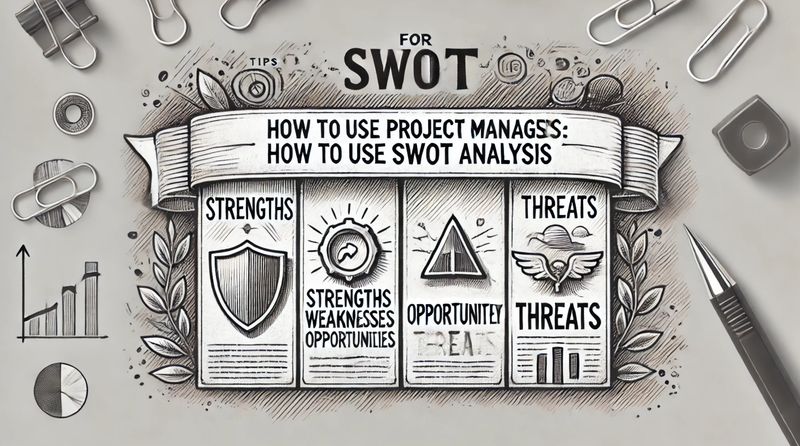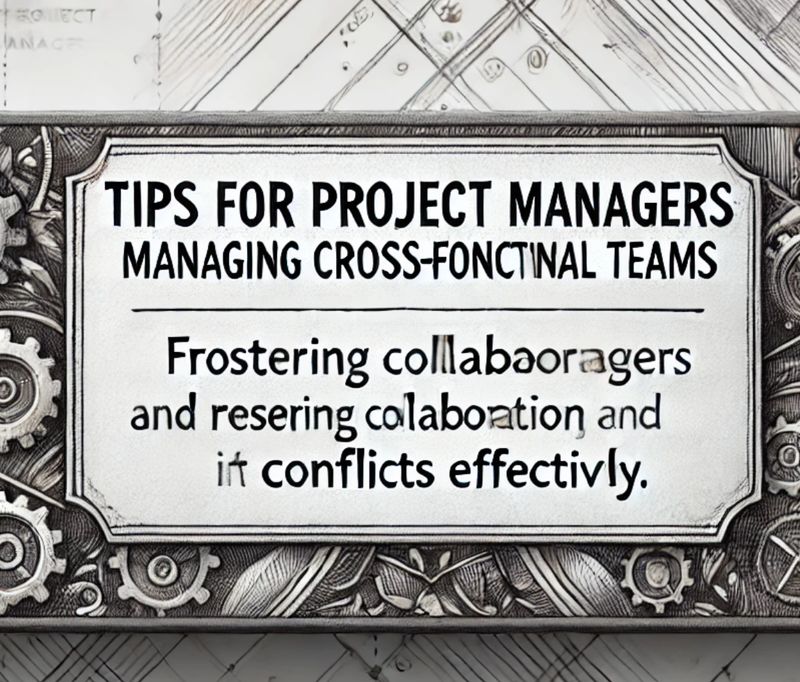How to Use SWOT Analysis in Project Management

Understanding SWOT Analysis
SWOT stands for Strengths, Weaknesses, Opportunities, and Threats. It’s a framework that allows you to assess internal and external factors impacting your project. Think of it as a brainstorming session with purpose, where you categorize ideas into these four areas to create a strategic roadmap.
Strengths and Weaknesses
These represent internal factors. Strengths are the assets or capabilities that give your project an edge. Weaknesses are the internal limitations or areas that might hinder progress.
Example:
Imagine your team excels at creative problem-solving. This strength allows them to adapt quickly when unexpected issues arise. On the other hand, if your project timeline is too tight, this weakness may lead to rushed decisions and errors.
Opportunities and Threats
These are external factors. Opportunities are external conditions your project can leverage for success. Threats are risks or obstacles outside your control that could impact the project negatively.
Example:
Your project might benefit from new technology trends. This opportunity could improve efficiency or add value to deliverables. However, a global supply chain disruption could delay resources. This threat must be accounted for in contingency planning.
Applying SWOT Analysis in Project Management
Once you understand the basics, applying SWOT in your projects involves a step-by-step approach. It’s not just about listing items but making the insights actionable. Here’s how you can put SWOT into practice as a project manager.
Step 1: Gather Input from Your Team
Your team is your best resource for gathering insights into strengths and weaknesses. By involving them, you not only get diverse perspectives but also foster a sense of ownership.
Example:
In one project, you might ask your team to identify areas where they feel confident. Someone may highlight their expertise in using specific software, which becomes a strength. Conversely, a team member might mention they lack experience in handling client negotiations, flagging this as a weakness to address.
Step 2: Analyze the External Environment
Stay updated on industry trends, stakeholder expectations, and market conditions to spot opportunities and threats. This analysis often involves research and discussions with external stakeholders.
Example:
If you notice a competitor struggling with customer satisfaction, this could be an opportunity to position your project as a better alternative. At the same time, economic instability might be a looming threat, requiring budget adjustments or alternate resource planning.
Step 3: Prioritize and Develop Strategies
Not all factors identified in a SWOT analysis will hold the same weight. Focus on the items that have the most significant impact on project success. Use the findings to create strategies that enhance strengths, mitigate weaknesses, capitalize on opportunities, and prepare for threats.
Example:
If one of your project’s strengths is a robust testing phase, you can extend it to cover areas impacted by potential threats. Alternatively, if a weakness lies in communication delays, introducing collaboration tools like Slack can help bridge the gap.
Making SWOT Work for Your Project
A SWOT analysis isn’t just a one-time exercise; it’s a tool you should revisit at different stages of the project. Let’s explore how you can keep it relevant throughout the project lifecycle.
Start with SWOT During the Planning Phase
Early in the project, SWOT helps clarify goals, align team priorities, and anticipate challenges. Incorporating SWOT into the project charter ensures strategic alignment from the outset.
Example:
When drafting a project charter, you might note a strength such as having a dedicated team with expertise in agile methodology. On the flip side, a tight budget might emerge as a weakness, requiring creative solutions to optimize resources.
Revisit SWOT During Project Reviews
Mid-project reviews are an excellent opportunity to reassess SWOT elements. Circumstances often change, and a periodic check can reveal new opportunities or threats while confirming whether strategies are working.
Example:
In a quarterly review, you might identify an emerging technology as an opportunity to improve your project’s deliverables. This discovery could lead to incorporating innovative tools, giving your project an edge. Simultaneously, market trends could shift, posing threats you hadn’t anticipated, such as a new competitor.
Use SWOT for Post-Project Evaluations
After project completion, use SWOT to reflect on what worked and what didn’t. This reflection provides valuable lessons for future projects and helps improve processes.
Example:
You might identify that strong stakeholder relationships were a key strength during the project, leading to smooth approvals and fewer delays. On the other hand, a lack of training for new tools could surface as a weakness, emphasizing the need for better preparation in future initiatives.





